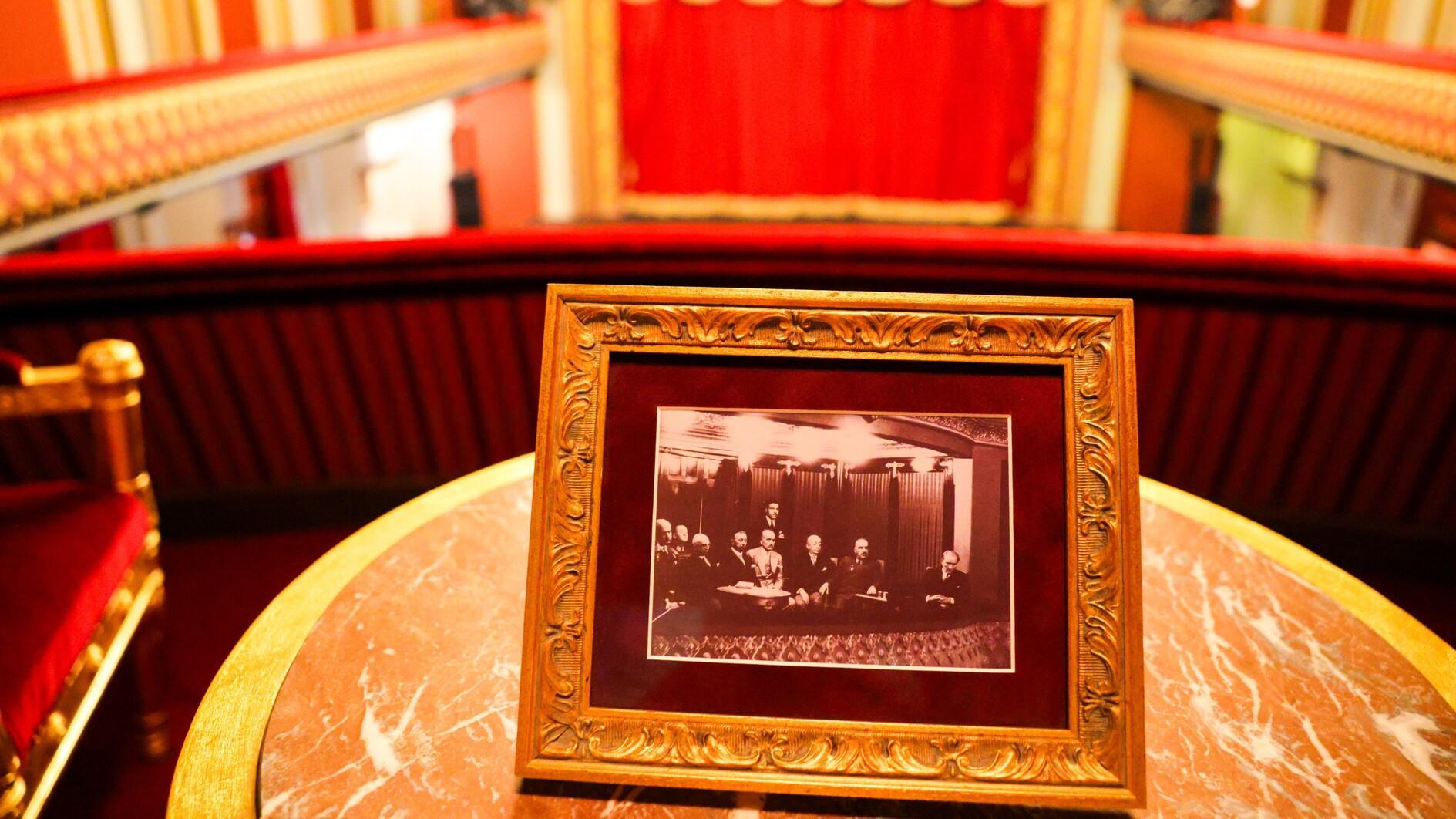
The loge where Mustafa Kemal Atatürk, the founder of the modern Turkish Republic, watched the first Turkish opera in 1934 has been carefully preserved at the Ankara Painting and Sculpture Museum, untouched since he sat there with Iranian Shah Reza Pahlavi.
The Turkish Quarry Concert Hall, a prominent feature of the museum, is a 400-seat cultural center decorated with traditional motifs admired by Atatürk and has hosted significant cultural events, including the first performance of Ahmed Adnan Saygun’s opera “Özsoy” in 1934.
“I don't want to leave this place, thanks to the hands that made it,” Atatürk would say about the hall.
The opera was staged in honor of Reza Shah Pahlavi, the Shah of Iran, who was to visit Türkiye upon Atatürk's request. “Özsoy” is known as a historical and lyrical reference to the mutual relations between the Turkish and Iranian peoples based on Firdavsi's “Shahnameh.”
The iconic building which houses the museum is a prime example of the First National Architecture Period. The museum’s collection, boasting over 3,600 works of art, spans various disciplines, including painting, sculpture, ceramics, printmaking and more, with 232 of these works currently on display.
Many of the museum’s pieces are exhibited through temporary exhibitions, featuring works stored in its extensive archives.
The museum’s history dates back to 1927-1930 when it was originally built as the Turkish Hearths Headquarters. In 1975, it was transferred to the General Directorate of Fine Arts and subsequently opened as a museum in 1980. Last year, it attracted over 104,000 visitors.
Güler Dişbudak, a museum specialist, shared that the museum has gone to great lengths to preserve the artifacts and artworks within its walls. Notably, the museum employs advanced security and storage systems to protect its collection.